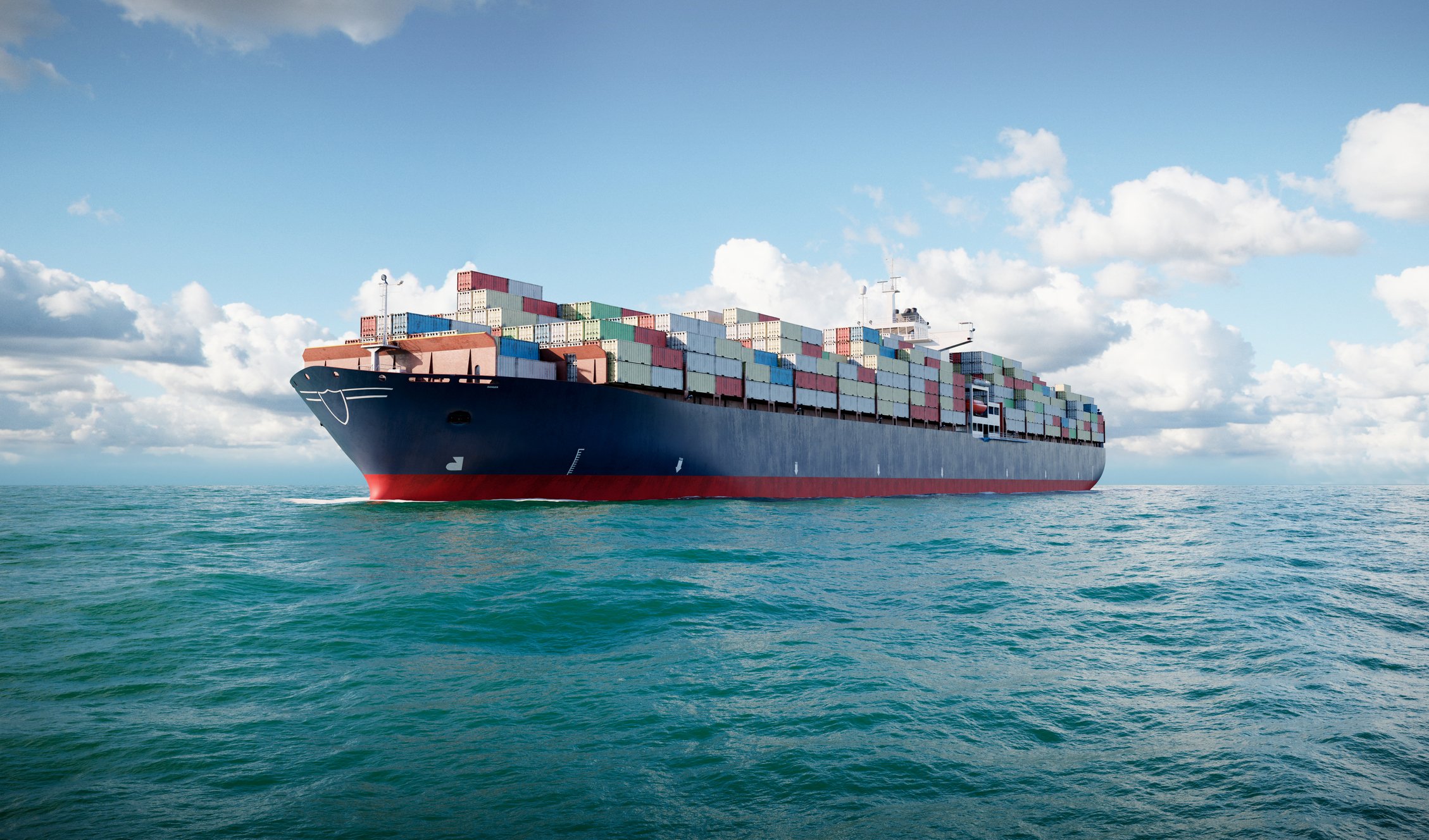The stocks of shipping container leasing companies went on a torrid run last year. CAI International (CAI +0.00%) led the way, rebounding a jaw-dropping 226.6%, followed by a 188.6% gain for Textainer Group Holdings Limited (TGH +0.00%), and a 137% surge from Triton International (TRTN +0.00%).
Here's a look back at what powered those epic runs and why these shipping stocks could have more fuel to keep heading higher in 2018.

Image source: Getty Images.
Bouncing back after a tough stretch
The shipping industry went through a significant downturn in 2015 and 2016 as global trade growth slowed at a time when the industry had too many ships and too much debt. Conditions got so bad that South Korean shipping giant Hanjin declared bankruptcy in the third quarter of 2016, which sent shockwaves throughout the entire industry. However, that event seemed to be the watershed moment of the downturn since it helped drain some of the industry's excess capacity. Because of that, and an uptick in global trade, shipping rates rebounded in 2017, which helped drive up container prices and lease rates.
Those factors powered a dramatic improvement in profitability for container leasing companies. CAI International, for example, reported $17.6 million, or $0.90 per share, of net income in the third quarter, which was a tremendous recovery from the $5.5 million, or $0.28 per share, loss it posted in the third quarter of 2016. Textainer Group Holdings, likewise, reported improving results last year, including returning to profitability in the third quarter. Meanwhile, Triton International also turned around its financial results, with it going from a $0.3 million adjusted net loss in the third quarter of 2016 to $61.1 million of adjusted net income in last year's third quarter. These substantially better financial results helped fuel last year's stunning rebound in those shipping stocks.

Image source: Getty Images.
Just scratching the surface
That said, profitability in the sector could head even higher in the coming year. For starters, rates on legacy leases remain well below recent market prices, which provides shippers with upside as they reprice. Textainer Group Holdings, for example, noted that contracts maturing this year have an average rate of $0.56 per container equivalent unit (CEU) per day (with the figure declining to $0.36 per CEU by 2021), which CEO Philip Brewer noted were "well below" current rental rates. Because of that, Brewer said, "If current market conditions continue, as these leases reprice any increase in rental revenue will flow straight to our bottom line."
In addition, container companies have taken advantage of low container prices to bolster their fleet. They've secured excellent returns on these investments, which should start flowing to the bottom line in the coming quarters. For example, CAI International's CEO Victor Garcia noted last quarter:
For the year to date, we have committed investment in containers of $470 million, virtually all of which are subject to long-term leases with an average lease duration of over 8 years. Of the container investment made this year, $253 million was delivered in the third quarter. We have an additional $64 million of containers to be delivered in the fourth quarter, all of which are fully booked under attractive long-term leases. We expect our fourth quarter results to see some benefit from the full quarter effect of the equipment placed on lease during the third quarter.
Textainer, likewise, added to its fleet, investing about $500 million through the third quarter, though most of those containers hadn't gone out on lease at that point. Brewer said, "The impact on our results is not yet apparent and will be seen in the coming quarters."
Meanwhile, Triton CEO Brian Sondey said the company was making "aggressive container investments" with it ordering $1.6 billion for delivery in 2017 and had already ordered another $100 million for this year. "The significant investments we have made in our container fleet will provide strong support for our future profitability and cash flow," Sondey said.
All have upside, but one seems to have the most potential
While a repeat performance of last year's triple-digit rebound is unlikely, these shipping stocks certainly have the catalysts that could continue pushing them higher in 2018. That said, of this trio, Textainer Group Holdings seems to have the most upside since its stock is still down nearly 50% from its peak. Aside from the fuel provided by a continued improvement in profitability, another thing that could keep Textainer's rally going this year is if the company brought back its once-lucrative dividend, which it eliminated in the third quarter of 2016 following the Hanjin bankruptcy. Brewer said at the time that the company would "review this decision as market conditions change." With conditions clearly improving, Textainer has a potentially significant catalyst on the horizon that could give it the fuel to keep rallying.






